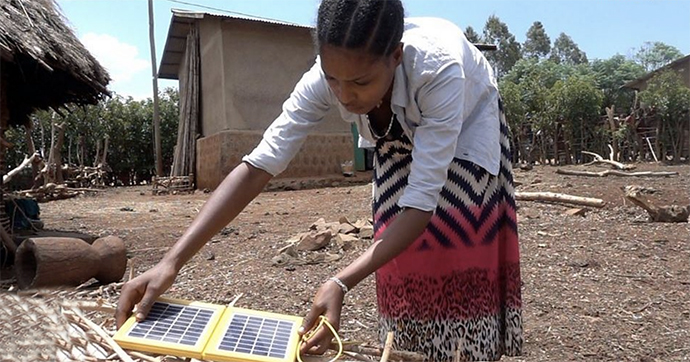
The theme of Earth Day this year is “Invest In Our Planet,” a call on governments, businesses, and citizens to move away from our reliance on fossil fuels and to build a 21st-century society focused on green energy and inclusive growth. This transition is beginning to happen, with an increase in green jobs becoming available and a growing number of people choosing to pursue this sector or changing careers.
A Gender-Just Society
As the transition gains momentum, women and girls must be at the heart of the shift, leading and participating as decisionmakers and workers in the green energy sector. This gender-just transition recognizes the voice and experiences of women and girls and unleashes their potential to ensure innovation while enhancing equality and economic empowerment.
Inequality Starts at a Young Age
Unfortunately, gender gaps are significant and start early in life, especially for most women and girls living in underserved communities.
Harmful gender norms, biases, and stereotypes are reinforced in childhood, shaping future aspirations. Daily activities as simple as play—learning through toys, games, and time spent outdoors—favor boys. As a result, we see gender gaps in cognitive development, school completion rates, and test scores.
In childhood, scores in math and science do not diverge significantly between girls and boys. Studies show that girls have similar cognitive and behavioral skills as boys in certain settings. This starts to change in secondary school, at the onset of puberty.
At this pivotal transition to adolescence, school dropout for girls also ticks up because of early marriages and pregnancies, and other pressures such as demands on girls’ time and resources. Learning loss due to school closures during the COVID-19 pandemic may accelerate this trend.
Girls Face Obstacles in Later Education and the Workforce
Fewer girls choose to study science, technology, engineering, and math (STEM), a critical field for success in the green economy. This is largely because of gender biases and norms, for example, stereotyping that girls should not be engineers because it is a masculine field. Evidence consistently shows that girls have lower self-confidence in their STEM abilities than boys and are not encouraged by parents and teachers. Few accessible female role models in this sector exist.
By the time adolescents and young adults enter the workforce, the disparities are stark. There are fewer women in STEM jobs, and they are paid less for the same work. As we advocate for inclusion of women and girls in the just transition, we must ensure that pay is equitable.
We know that the gender pay gap is even wider for women already marginalized—so policies and programs for STEM education, skills training, and workforce development must be designed and carried out with an intersectional lens.
Countries Must Embed Gender Equality in Emerging Green Policies
In Kenya, career opportunities will favor people with STEM skills. The government has announced plans to move the country into a “rapidly industrializing middle-income country” by 2030 with a strong emphasis on growing the digital economy. The President of Kenya also announced a goal of 100% use of clean energy by 2030 and 100% access to clean cooking by 2028.
To empower students and prepare them for work, the Kenyan government has introduced life skills training programs through mentorship. But the programs lack a gender focus and do not address the negative norms, biases, and stereotypes that result in the “leaky pipeline”—the drop off of girls pursuing STEM as they progress from secondary school, higher education, and into the workforce.
In Guatemala, women and girls from historically marginalized communities face additional barriers and limited opportunity for entering the green economy. For instance, in indigenous communities, predatory industries have usurped land tenure arrangements. However, opportunities are present as well; the use of existing and emerging green agricultural practices grounded on indigenous knowledge can enable women to generate income and enhance multigenerational ties. As Guatemala adopts climate policies and develops programs, the government must reverse exclusion by prioritizing gender equality and reshaping gender dynamics.
It will take all of us working together to address the climate crisis. Gender inequality limits diversity, creativity, productivity, and economic growth. Women and girls—innovative and creative thinkers—can be catalysts for change, offering diverse perspectives to ensure inclusive and equitable policies, from urban planning to consumption decisionmaking and transportation.
